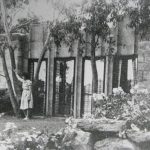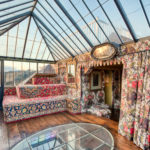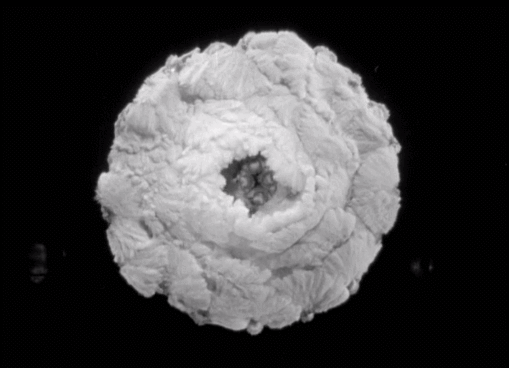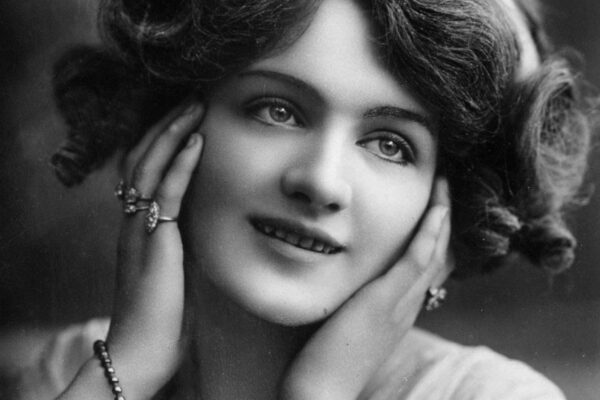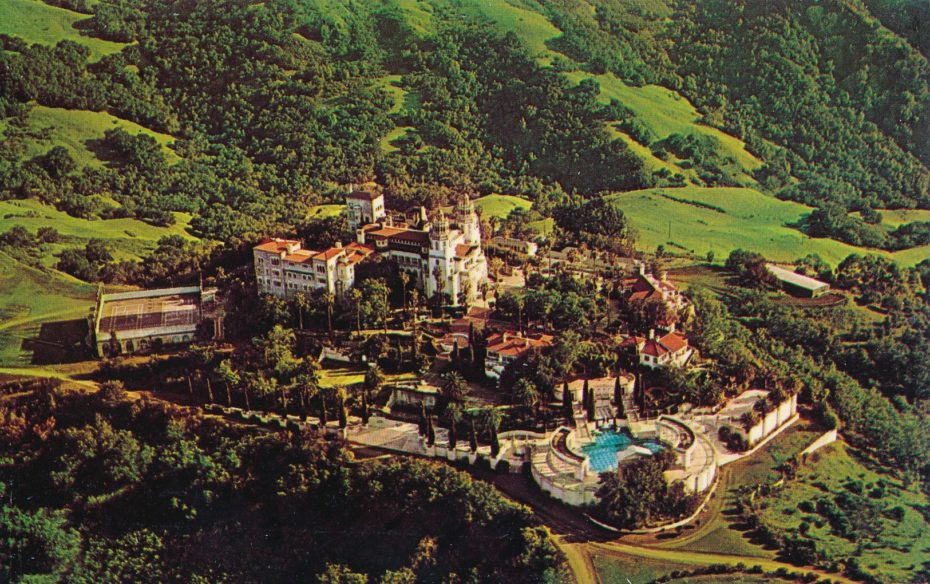
They said it was where California met the world. Where Egyptian antiquities mingled with cast sculptures by Bernini, and the gaze of medieval eyes met those of Hollywood’s elite. Today, we’re traveling into the nooks and crannies of La Cuesta Encantada – The Enchanted Hill.
1. Its Architect Was a Woman
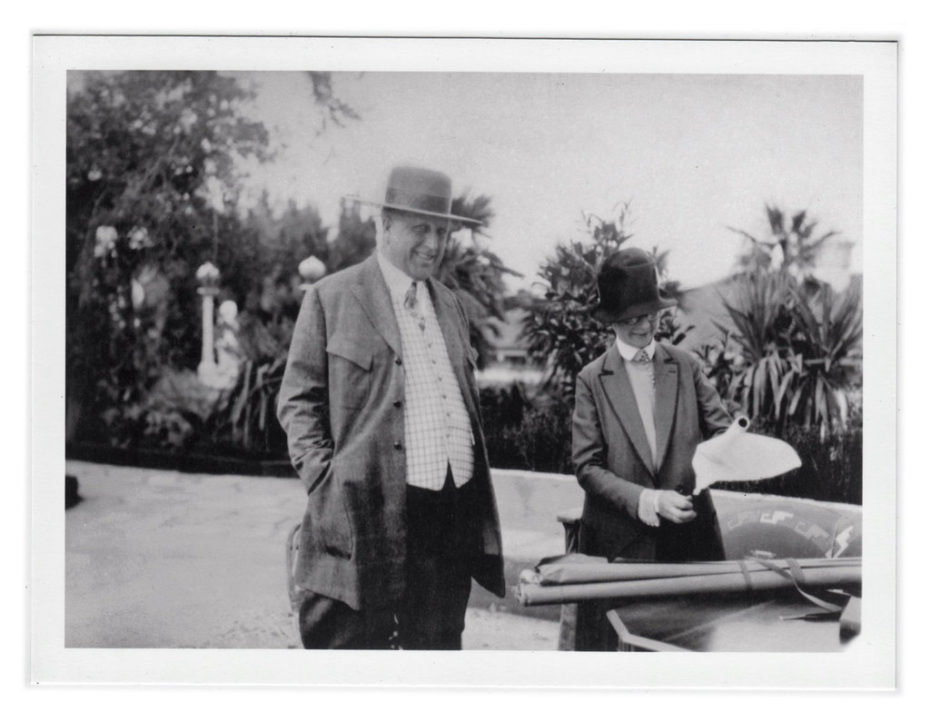
Where to begin with Julia Morgan? She was the first woman ever to gain admittance to Paris’ Beaux Arts school, and when she finished, the San Francisco native went back to the Bay Area to start her own firm in 1904. A string of impressive projects immediately started flushing out her portfolio, many in relation to the Hearst family. What set Julia apart from her peers was the depth of her work — of it’s ability to be at once worldly, and distinctly Californian. She loved incorporating California Redwood, exposed beams, and earth tones into designs that epitomised the Arts and Crafts movement, and she knew how to build a damn solid structure: one of her first projects, a bell tower on Mills College in Oakland, proudly withstood the 1906 earthquake. Hearst wanted the best for his castle, so naturally, he hired Julia.
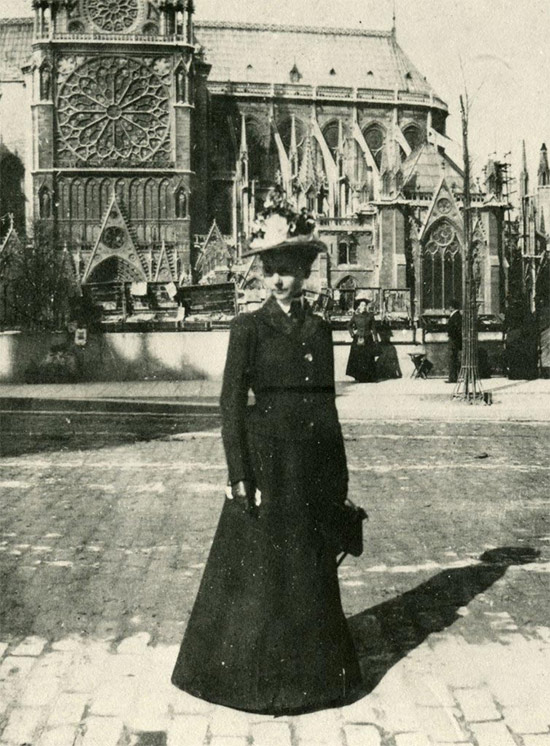
Initially, it wasn’t supposed to be a castle at all. Hearst and Julia envisioned a simple layout for the family’s old country retreat on what would eventually become 250,000 acres of San Simeon coastline – little bungalows, something that felt like a Mediterranean village in sky. After all, this was just to be Hearst’s new vacation house, right?
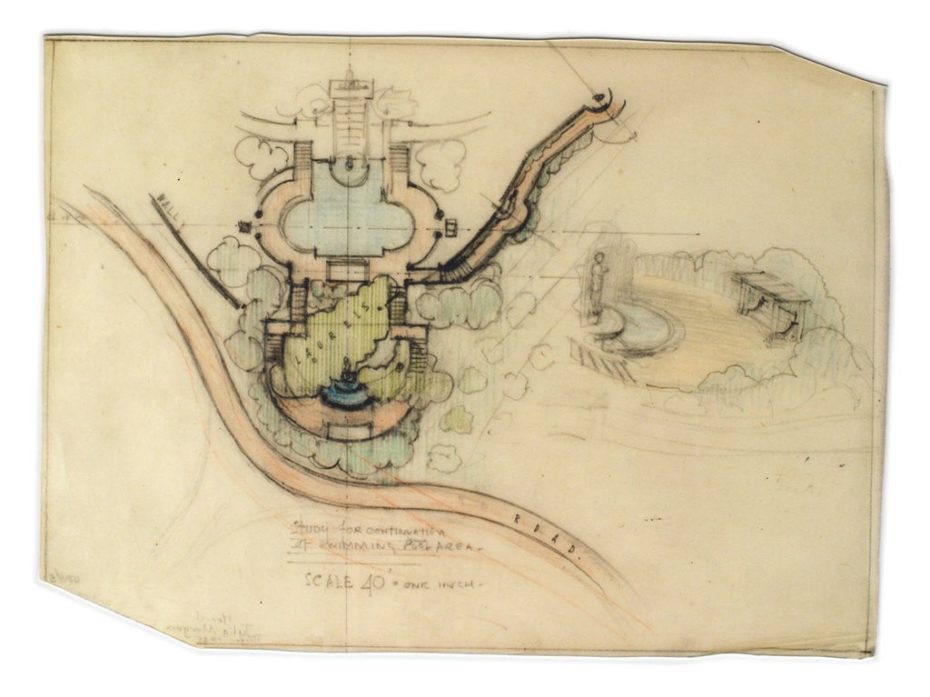
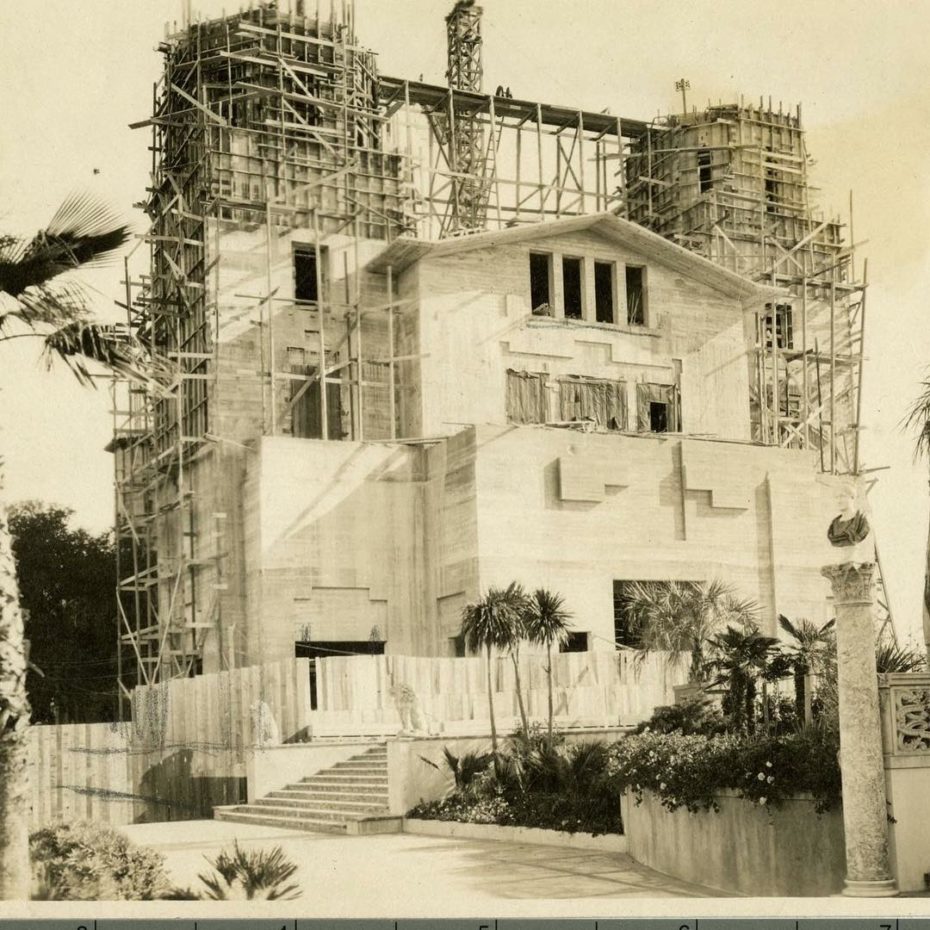
The scale of the project got bigger as time went on (and the antique collection grew). But the down-home sentiment remained the same; mansion-sized buildings were still referred to as “cottages,” the estate was called “the ranch”, and Julia made sure that the focal point was always, always the misty blue horizon. Instead of suffocate the front of the main house with pompous shrubberies, she made a simple and sprawling terrace to draw the eye to the sea. Julia worked tirelessly on the castle. In one 20-yer period alone she made over 500 trips to the hilltop, and the construction of her ever-multiplying plans was only halted by Hearst’s death in 1957. Whether it was literally bashing in the pool tiles to make them look like relics from Pompeii, or tracking down a rare Icelandic moss, she’s the reason the Castle makes jaws drop today.
2. It Was Once the World’s Largest Private Zoo
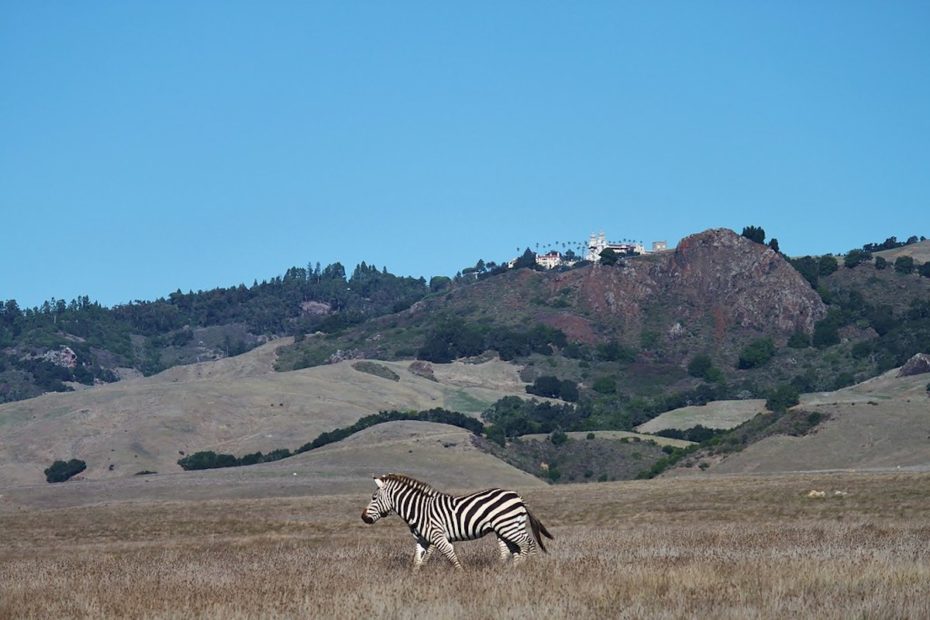
Something Julia probably didn’t think she’d ever add to her portfolio? Designer of the world’s largest private zoo. Formally known as “The Hearst Garden of Comparative Zoology”, the zoo was meant to feel like a real safari, where guests could observe animals roaming free (or at least in an immense paddock) from every corner of the globe. There were antelope, zebras and camels; exotic white deer, kangaroos, ostriches, giraffes – the list goes on.
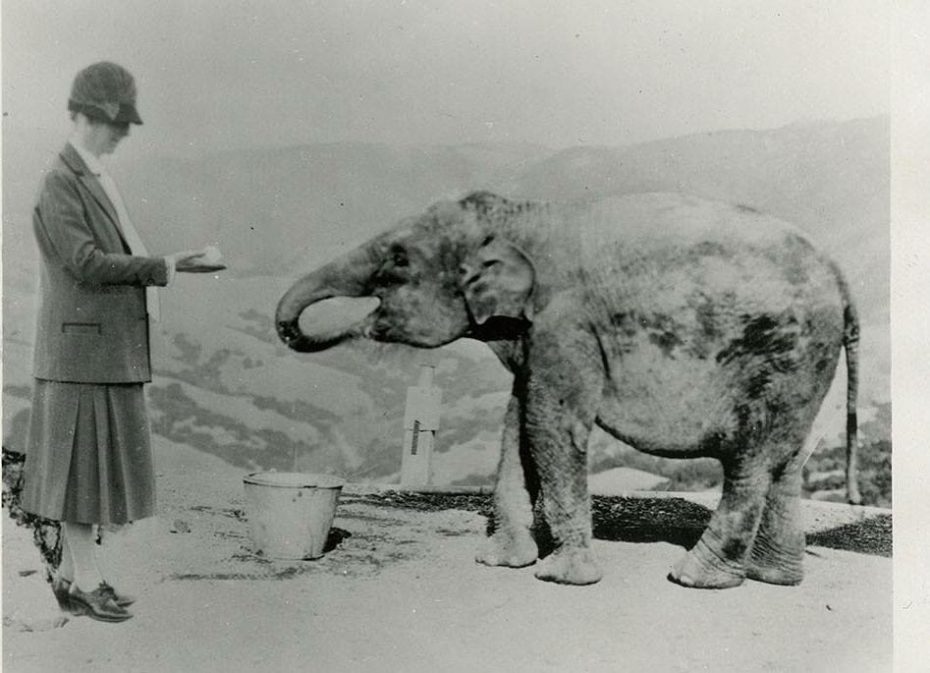
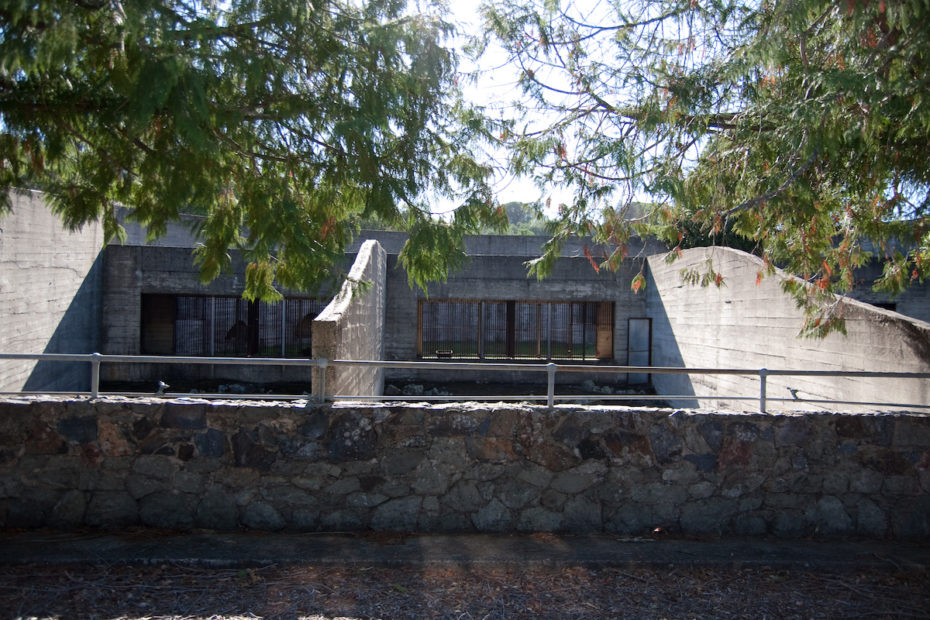
It wasn’t uncommon for royal estates back in Europe to have menageries, but Hearst was taking it to whole new level. Amongst the enclosed animals were jaguars, bears, and tigers; lions, monkeys, exotic birds, and even an elephant. The upkeep for such diverse animals was costly, however, and the Hearst disassembled the zoo in 1937. Still, the traces of the old wild park can be seen today in the immense and vacant menagerie cages, as well as the very DNA of the surrounding wildlife. Over 100 zebras roam the grounds today, and the area’s elk are thought to be descendants from those of the 1930s.
3. It Has Its Own Airport
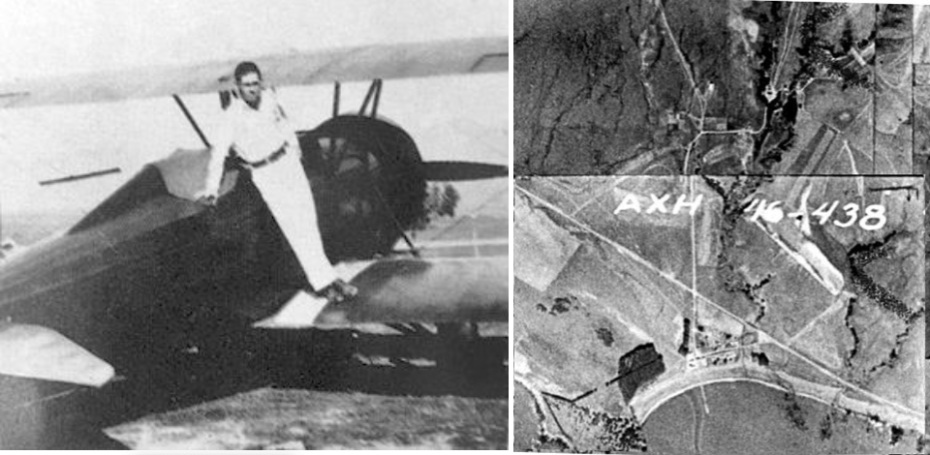
which had been flown into Hearst Airfield by millionaire Howard Hughes
They certainly had the room for it. Leave it to Hearst to decide that his morning paper ought to roll in by aircraft, ready for his notes. There was not one but three well oiled runways on a 70-acre field to welcome a plane as large as a 747 (true story) and Hearst’s most important guests.
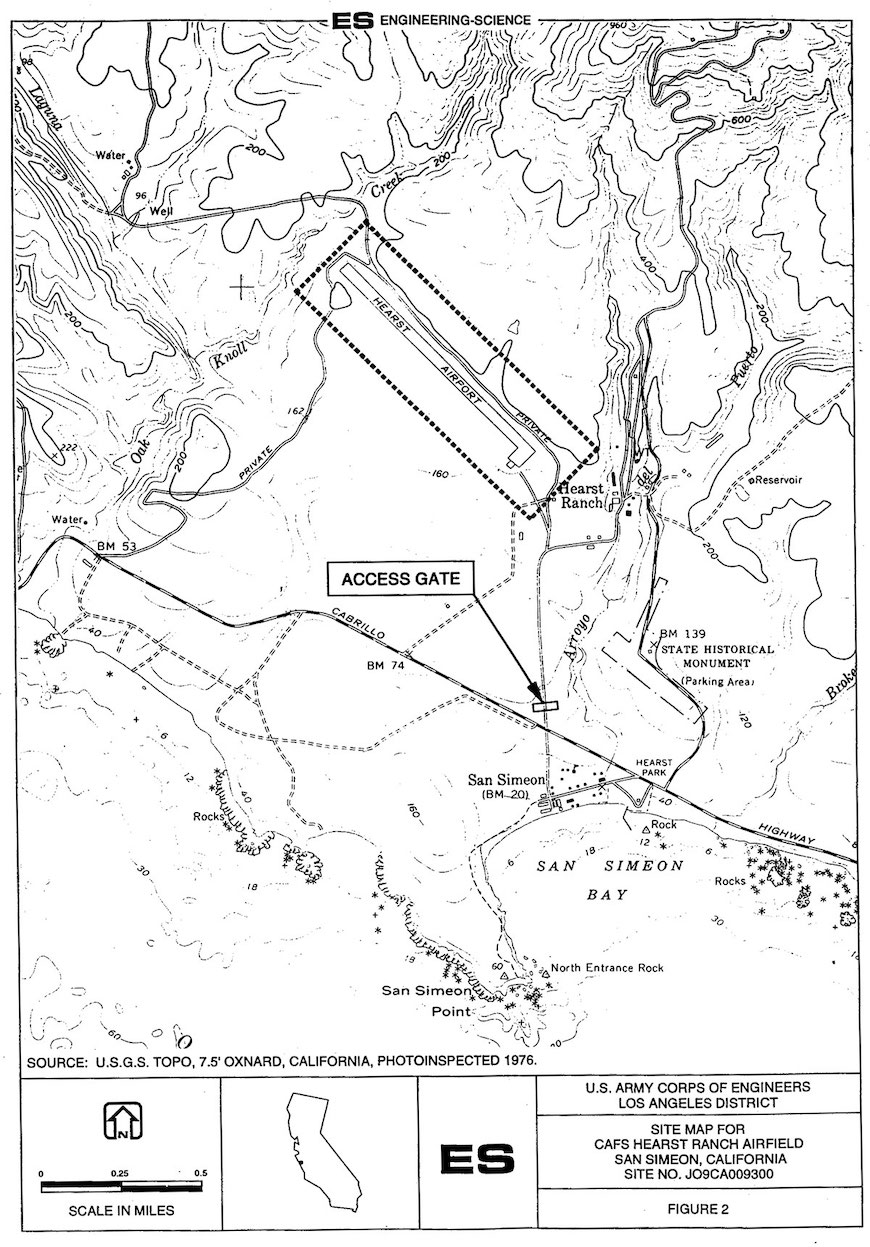
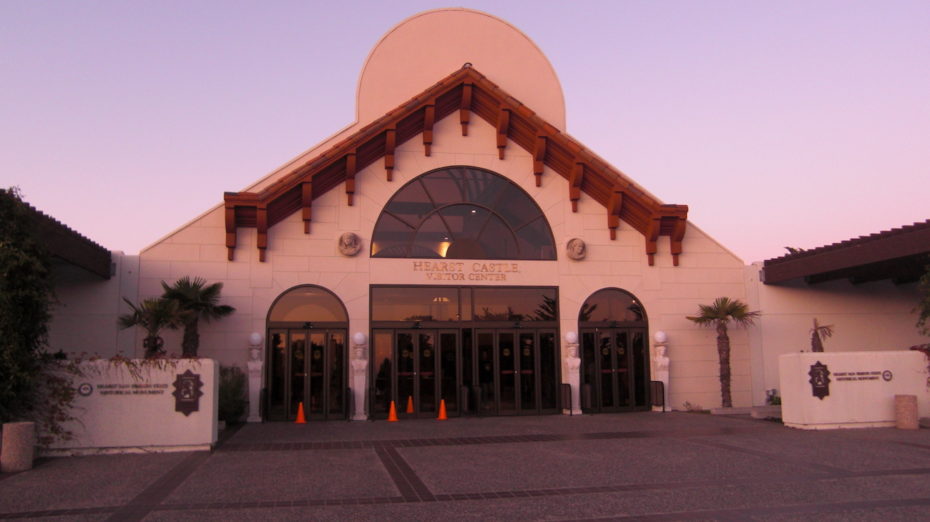
Today, the bite sized airport has been converted into the Visitor’s Center, which means that tourists are perhaps unknowingly treading the same, hallowed ground where Howard Hughes landed (rumours of an Amelia Earhart visit swirl as well). There’s still an official Hearst airstrip, just a mile away from the Visitor’s Center. Too bad it’s only available for the Hearst Corp.
4. The Edible Souvenirs
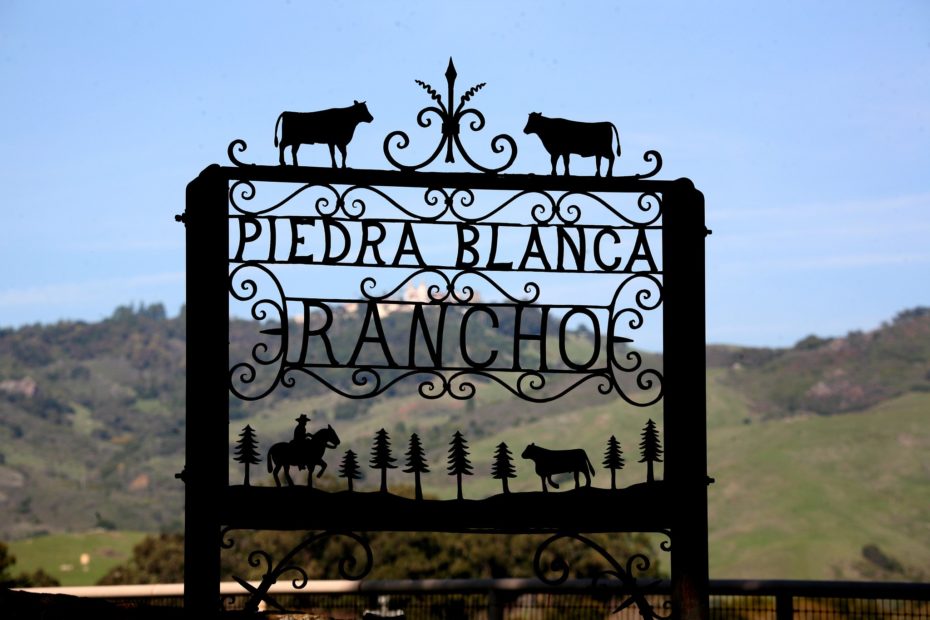
The Heart Castle has a real, working ranch that has now been raising cattle for 150 years on the Piedra Blanca Ranch. “I love this ranch,” wrote Hearst in 1917, “I love the sea and I love the mountains and the hollows in the hills and the shady places in the creeks and the fine old oaks and even the hot brushy hillsides – full of quail – and the canyons – full of deer. I would rather spend a month at the ranch than any place in the world.”
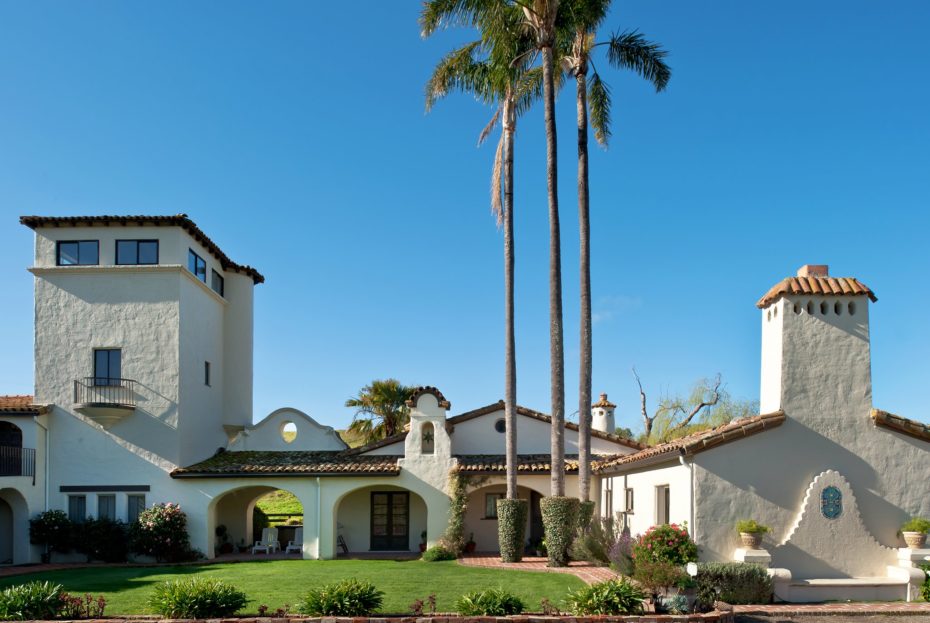
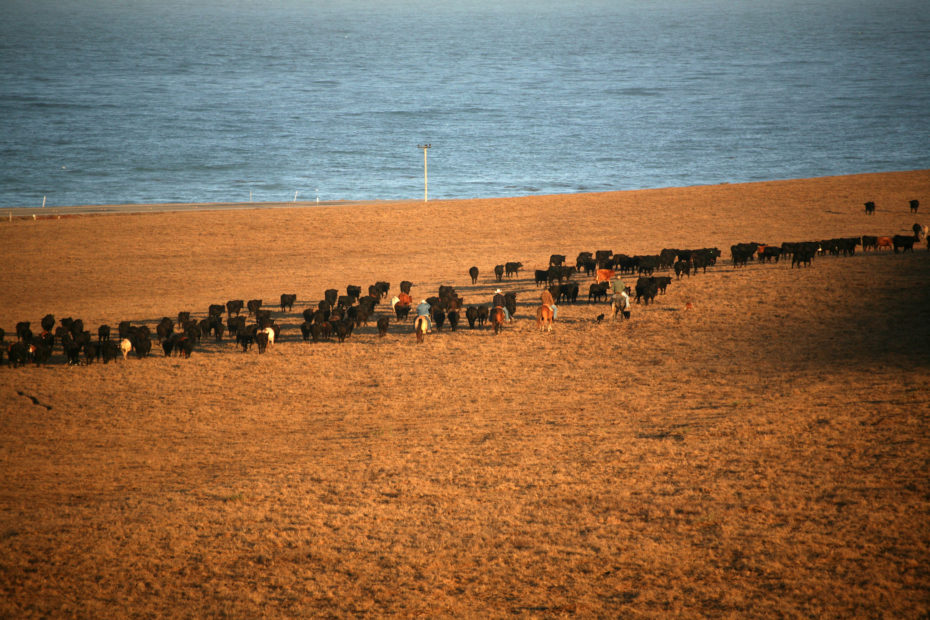
So yeah, Julia wasn’t just designing fancy foyers. She had to make a dairy barn, a poultry house, and a cowboy bunkhouse for Hearst’s dear friend (and an on-site rancher), Don “Pancho” Francisco Estrada. Luckily, upon his death Hearst transferred the majority to the land to the state of California, under the condition that it remain committed to agriculture – which makes this America’s last functioning estate ranch. What that means for you, of course, is the opportunity to pick up organic, humanely raised beef in the gift shop and select food markets. They even have an Instagram:
Not many folks know about the more classically American ranch house on the property, which once hosted Elizabeth Taylor. Sure, it had nothing on the 165 rooms up on the hill, but it was the heartbeat of the ranch — and while it’s not open to just anyone, apparently Lady Gaga was able to stay there while on-set for filming a music video.
5. Lady Gaga is a benefactor
The pop princess gave $250K in addition to the normal $23K event fees to help promote and restore Hearst Castle where scenes for her music video G.U.Y. were filmed. The estate currently has an annual operations budget of $12 million, but they have millions more worth of restoration that needs to be done and her individual donation was a huge help.
6. That time Cary Grant played an Unwelcome Prank on the Castle
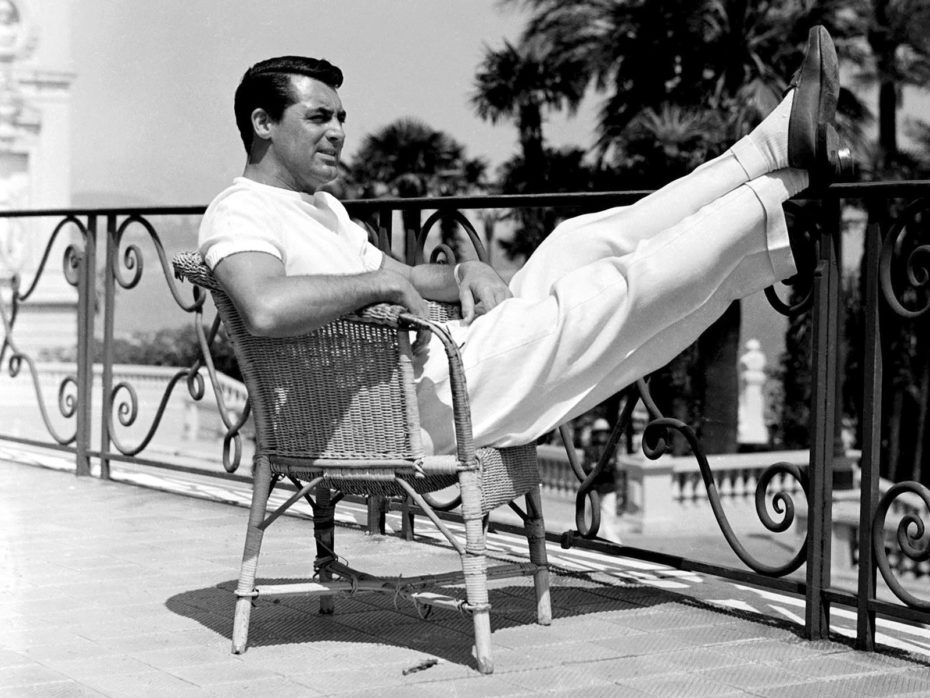
Remember, this wasn’t Buckingham palace. In fact, the crystal and porcelain table settings in the grand dining room were always accompanied with plastic bottles of ketchup. This was an adult playground, and one that was temptingly close to Hollywood. The “in-crowd” at the castle included Gary Cooper, Joan Crawford, Charlie Chaplin, Jean Harlow, Buster Keaton, and others, but especially Cary Grant.
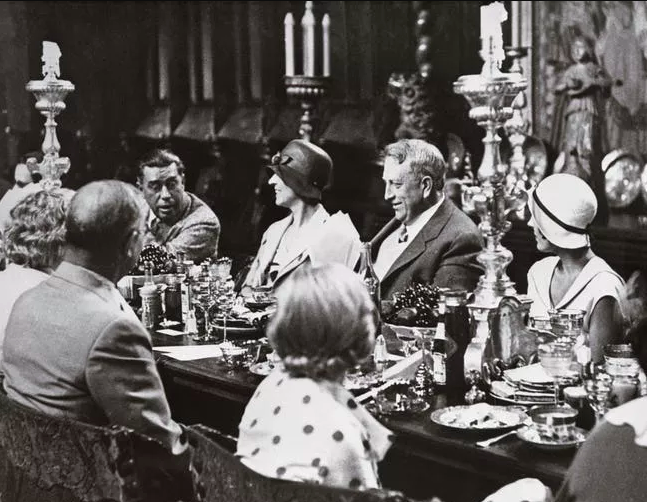
Cary was pals with Hearst’s son, also named William, who had a big trickster streak that drove his father crazy. On one visit to the castle, Grant was a willing partner in crime in his biggest joke yet: to flour-bomb the castle’s hangar. As in, Cary Grant flew over the castle and unloaded a lot – we mean a lot – of flour. How much? Well, enough for the movie star to find his bags packed and ready at the door when he touched down again. In the end, Hearst had mercy and he wasn’t sent packing.
7. The Murder of a Movie Mogul?
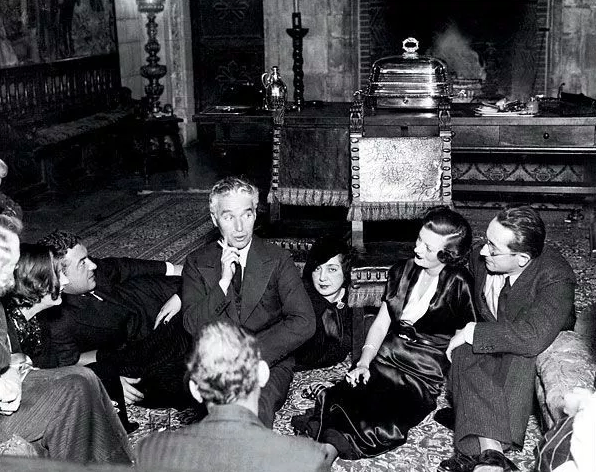
Now, things start to get seedy. Hearst was a level-headed enough man. Sure, the castle was hardly dry during Prohibition, but he was never a big drinker or partier. He did, however, take a new life-partner from the dramatic Hollywood set in actress Marion Davies. By the 1930s, Hearst was separated – by distance, not law – from his wife, and Marion was his live-in mistress and lady of the house. Unfortunately, Hearst was a jealous man – and Marion was a looker.
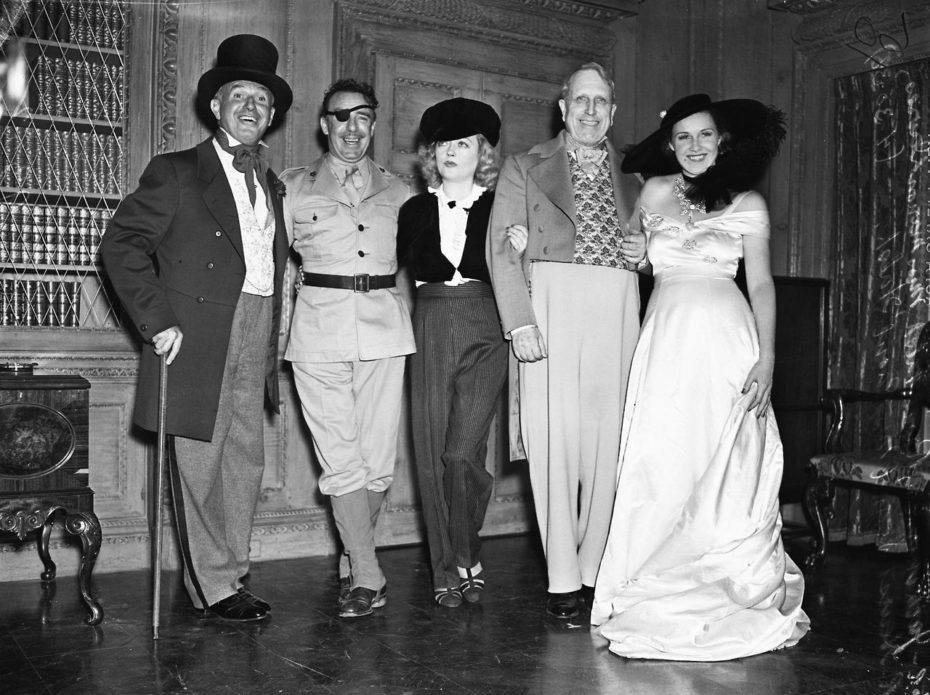
One of the biggest rumours going around was that Marion was having an affair with Charlie Chaplin, who visited the estate often, and had been invited to an intimate birthday party Hearst was throwing on his yacht for the “Father of the Western” film genre, Thomas Ince. In the fall of 1924, a handful of guests boarded the lavish Oneida yacht off the coast of LA for the festivities, until Ince fell violently ill and died.
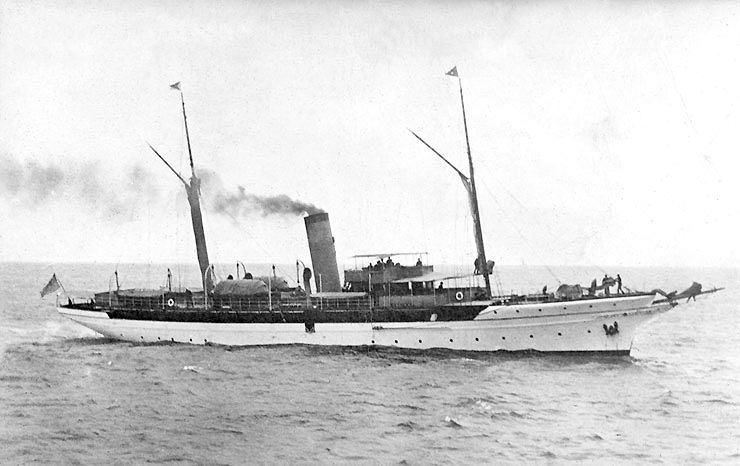
The doctors said “acute indigestion” called for Ince’s demise, while the yacht staff said a jealous Mr. Hearst shot Ince in the head, mistaking him for Chaplin. The morning paper ran the headline, “Movie Producer Shot on Hearst Yacht”, and some onlookers swore they saw blood dripping from Ince’s head on the boat – but the headlines were short-lived. Likely because there was no one else you’d want to piss off more in the media business than Hearst. Today, the case is pretty much closed to a death of natural causes – but the highly sensationalised tabloid reporting around Ince’s death goes to show what a prominent place in the culture Hearst occupied.
PS. Patty Hearst is an avid Dog Show Competitor now
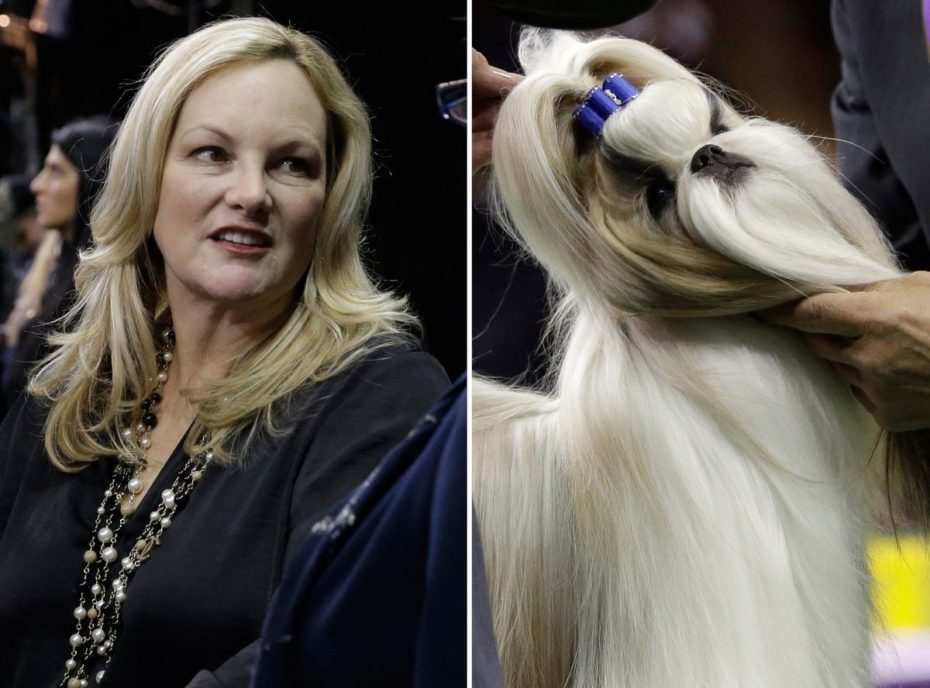
Heart’s granddaughter Patricia “Patty” Hearst took home a top prize a few years ago with her shih tzu, Rocket, at a show in New York City. She became infamous in 1974 when she was kidnapped by the Symbionese Liberation Army, and held up a bank with a machine gun.
(Recommended weekend watching: The Radical Story of Patty Hearst)


